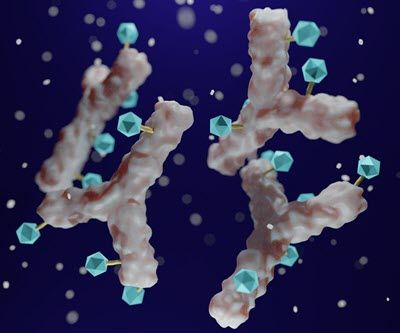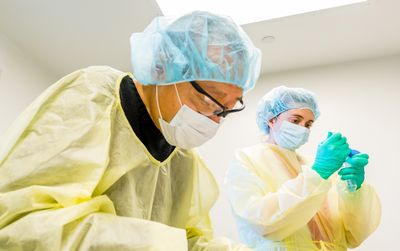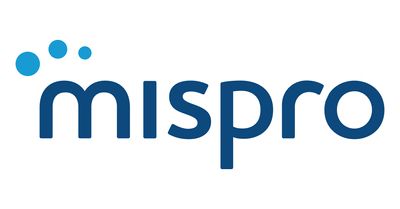ABOVE: © iStock.com, Koichi Yoshii
Even though many shark species are threatened or endangered, they’re still hunted for their liver oil. That’s in part because the oil is an abundant source of squalene, a critical component in some vaccines that acts as an adjuvant to drive a stronger, more durable immune response. Now, using synthetic chemistry techniques, researchers have derived a slew of compounds that could take squalene’s place in vaccine production.
In a study published in npj Vaccines on February 16, scientists synthesized and tested 20 new squalenelike compounds for their ability to elicit immune reactions. While some drove a smaller immune response than squalene, others outperformed it. The hope is that the new compounds might pave the way for better vaccine production in the future, and could, potentially, reduce the number of sharks hunted.
Squalene, a lipid that’s produced in small amounts by almost all plants and animals, boosts the body’s immune response to a vaccine’s active ingredient (though scientists aren’t entirely sure how). In addition to its crucial roles in the body and vaccine production, squalene is mainly used in cosmetics, as well as in other pharmaceutical products.
But, due to its structure, squalene is tricky (though not impossible) to synthesize, and especially difficult to produce in large, commercially viable amounts. The compound is found in abundance in shark liver oil, making the substance the purest and most cost-effective source of squalene. However, since oceanic shark populations have dropped 71 percent in the past 50 years, there’s a pressing need to find alternatives.
That’s why Christopher Fox, a synthetic biologist at the Seattle-based biotechnology nonprofit Access to Advanced Health Institute, and his team joined up with Chris Paddon, a synthetic biologist at Amyris, a biotechnology company that creates a semi-synthetic version of squalene using yeast.
Previously, studies have found methods to make squalene and squalenelike molecules from more sustainable sources. One group found a way to make large amounts of β-farnesene, a plant compound that is sometimes made from the breakdown of squalene, using genetically engineered yeast and fermented sugarcane. Though β-farnesene contains just half of squalene’s 30 carbon atoms, Fox and his colleagues combined it with other molecules to synthesize squalene and other molecules that resemble it. “We took advantage of the readily availability of [β]-farnesene, which contains 15 carbon atoms, to make analogues of squalene, which contains 30 carbon atoms,” Paddon writes in an email to The Scientist.
The team tested each compound’s ability to rev up immune responses in human blood and in vivo in mice. When added to human blood, the compounds successfully put immune cells on alert, as evidenced by the increased presence of several immune-related proteins, such as the cytokines interleukin-6 and interleukin-8, compared to normal blood.
The researchers then made experimental vaccines for the H5N1 flu virus, each including one of the 20 new compounds instead of squalene. When tested on mice, the alternatives successfully launched a protective immune response: after two immunizations, the mice made antibodies against H5N1. Some compounds elicited higher concentrations of antibodies in the blood than vaccines made with squalene, signaling that they drove a stronger response overall, while other compounds drove a weaker response.
“We were able to make over 20 different analogues of squalene, all of which have similarities to natural squalene, but also differences which we subsequently showed can change their properties when formulated into vaccine adjuvants,” Paddon explains.
The researchers say they aren’t sure why certain compounds invoked stronger immune responses than others, but want to continue to piece together this puzzle in the future. Indeed, by identifying squalene alternatives, Fox says he hopes to help understand the mechanism by which squalene acts as an adjuvant. “Although squalene has a long history of use in vaccines, its mechanism of action is not fully understood. Part of the value of generating new analogues and evaluating their biological activity is that it helps inform how the structure of this class of molecules relates to their function,” he writes in an email to The Scientist. And the researchers already have some hints, as the top performing molecule, which they call Acids A, was both negatively charged and less lipophilic than other compounds, which might play a role in its immunogenicity.
Chase Kempinski, a plant physiologist and bioengineer who was not involved in the study but has previously collaborated with some of the study and authors and is also CEO of Enepret Incorporated, a biotech company in the same general field as Amyris, tells The Scientist that while he thinks the study was well done, he cautions that “these would still have to go through a full battery of clinical trials before they could be used in a vaccine.”
However, he adds that the study “helps advance our understanding of adjuvant mechanisms. We need more adjuvants because we need to make better vaccines.”
Correction (2/23): This article originally misspelled the name of Chase Kempinski's company, Enepret Incorporated. The Scientist regrets the error.






